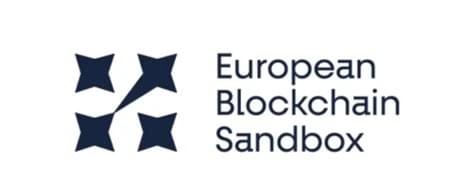
The 2Tokens consortium has been selected for the third cohort of the European Blockchain Sandbox with its Renewable Energy Community (REC) use case. This recognition highlights the innovative potential of tokenization in the energy sector and positions 2Tokens to explore regulatory dialogue and practical adoption within a trusted European framework.
The Renewable Energy Communities (RECs) use case demonstrates how blockchain technology can revolutionize decentralized energy management and distribution. Leveraging Distributed Ledger Technology (DLT), smart contracts, tokenization, and decentralized autonomous organizations (DAOs), RECs enable local households, businesses, and public entities to collectively own, govern, and manage energy assets. This cooperative model enhances transparency, efficiency, and community engagement while promoting sustainability and decentralized energy distribution. This initiative underscores the transformative potential of blockchain in creating resilient and transparent energy systems that align
with the EU's broader climate and innovation goals.
Key components of the REC use case:
1. Tokenization of Energy and Financial Instruments: Tokenization is a cornerstone of the REC's operations, enabling the creation of digital assets for energy tokens (offtake), control (voting), membership, ownership (shares, participations), and finance (loans and bonds). Energy Tokens quantify and share energy value among members and local consumers, while membership (shares and participations) provide ownership and governance rights.
2. Participant Wallets: Equipping participants with digital wallets, allows them to manage and trade their tokens seamlessly. Enhancing user experience, enabling easy tracking of energy tokens, control (voting), ownership (participations, shares), and investment returns (loans and bonds). They also ensure secure storage and transfer of digital assets.
3. Decentralized Autonomous Organization, DAO: Control (governance) within RECs is supported by a DAO setup, which facilitates democratic decision-making and community engagement. By leveraging blockchain's transparency and security, digital governance ensures that governance processes are fair, inclusive, and efficient. Members can develop and vote on proposals, allocate resources via the treasury manager function, and jointly shape the future of their own energy community.
4. Privacy, Regulatory Compliance, and Taxation: The REC use case addresses critical questions around personal and commercial privacy, ensuring compliance with regulations such as the European Energy Directives (Fit for 55 package, Renewable Energy Directives), European taxation directives (digital platforms DAC7 and crypto assets service providers DAC8), personal privacy (GDPR), and commercial privacy (Data Governance Act DGA), Markets in Crypto-Assets Regulation (MiCAR), and Markets in Financial Instruments Directive (MiFID).
This 2Tokens use case highlights the Amelander Energie Coöperatie, which aims to harness the benefits of decentralized, community-driven energy management. By adopting DAOs, thecooperative enables collective ownership and governance of shared energy systems, strengthening local resilience and sustainability. The integration of distributed ledger technology (DLT) and smart contracts brings greater transparency and operational efficiency. Additionally, tokenizing ownership and investment instruments opens the door to a broader range of investors, enhancing financial sustainability and supporting
future growth. Besides the 2Tokens foundation, the consortiummembers are ABN-AMRO, ENERGYBLOCKS, Hypha Energy and the AEC.
